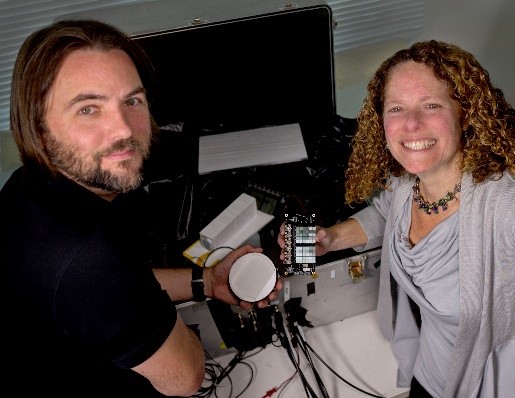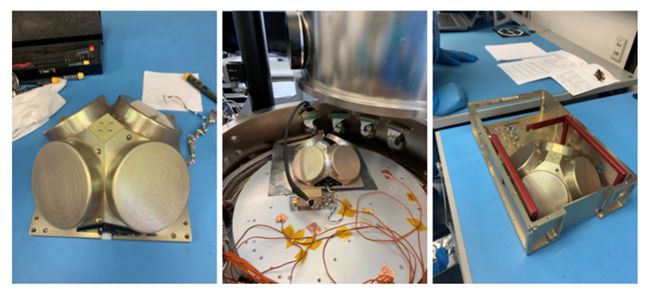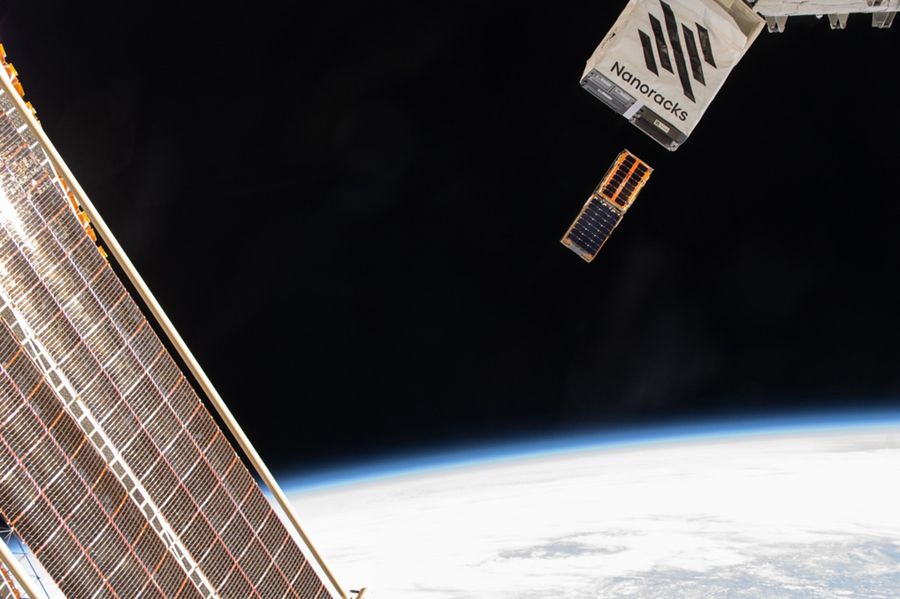SmallSat Missions @ GoddardBurstCube

BurstCube is a GSFC 6U CubeSat led by Principal Investigator Dr. Jeremy Perkins. The mission is funded by the NASA Science Mission Directorate Astrophysics Division. It is a collaboration amongst several institutions including the University of Alabama, University of Maryland, University of the Virgin Islands, Universities Space Research Association, Naval Research Lab, and NASA Marshall Space Flight Center. BurstCube's primary goal is to detect, localize, and characterize short Gamma-ray Bursts (sGRBs). Currently, existing sensitive Gamma-ray Bursts (GRB) observatories cover approximately 70% of the sky at any one time, and any increase in sky coverage by additional facilities increases both the likelihood of coincident detection, and the number of sGRBs that can be correlated with Gravitational Wave (GW) signals. BurstCube will utilize four cesium iodide (CsI) detectors sensitive to gamma-rays from 50 keV to 1 MeV which are coupled to arrays of silicon photomultipliers (SiPMs). GRBs will be automatically detected onboard and rapidly downlinked with time and localization data for dissemination to ground-based observers to maximize the chances of detecting fading broadband afterglows.
The coincident detection of sGRBs and GW sources will:
- Provide the "smoking gun" evidence for the progenitors of sGRBs for the first time
- Increase the confidence in low-significance LIGO/Viro GW detections
- Provide small temporal and positional windows for targeted searches of GW data that will enable detecting weaker GW signals than can be detected in blind searches lacking priors, increasing the search volume
- Provide the astrophysical context of GW signal via population statistics on jet beaming angles and gamma-ray energetics as inputs into stellar population synthesis models
- Provide localizations that will assist wide-field follow-up observers in afterglow detection and redshift measurement which will lead to insight into cosmological parameter estimate, constraints on the NS equation of state, and an inventory of r-process elements in the Universe constrained by the faint sGRB kilonova signature.


Both the instrument and spacecraft bus were integrated at GSFC. The bus is comprised of several COTS components from vendors such as Hyperion (star tracker and GPS receiver), Sensonor (IMU), GOMSpace (fine sun sensor and magnetometer), CubeSpace (reaction wheel), Ibeos (EPS and batteries), Blue Canyon Technologies (solar arrays), and Vulcan Wireless (radio). The flight computer was developed by GSFC along with the necessary interface boards. BurstCube has invested in modifications to the Vulcan radio to have the ability to communicate with both NASA's Near Earth Network (NEN) ground and Tracking and Data Relay Satellite System (TDRSS) space relay assets. TDRSS will be used by BurstCube to meet its rapid response requirements.
BurstCube launched to the International Space Station on March 21, 2024 and deployed on April 18, 2024. The team had challenges working through spacecraft commissioning. A number of the attitude control system sensors were not functioning nominally and one of the solar arrays did not deploy. The team was able to achieve stability in a sun point configuration and craft a science operations mode in that state. They have been able to demonstrate multiple-day operation of the instrument and collect science. Next steps are to bring online the triggering and beacon functionality needed for gamma ray burst alerts. Due to the higher drag sun point configuration, the mission will de-orbit sooner than expected, and this is predicted to occur before the end of 2024.


